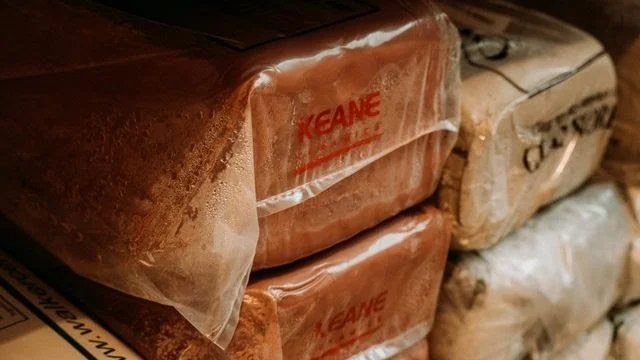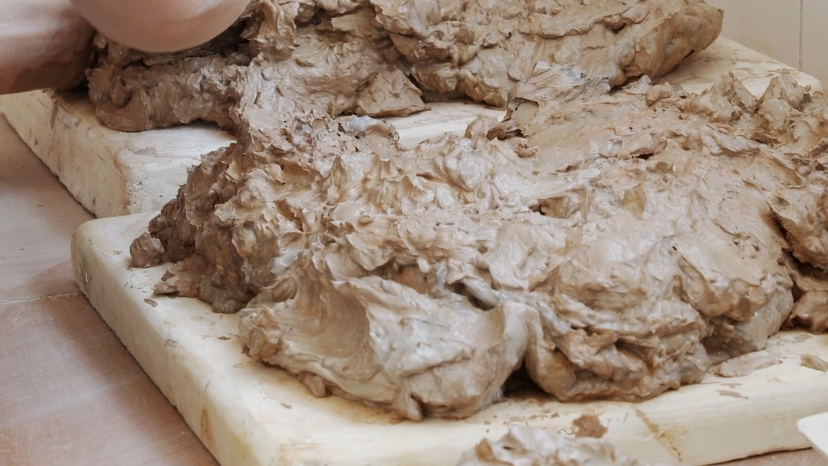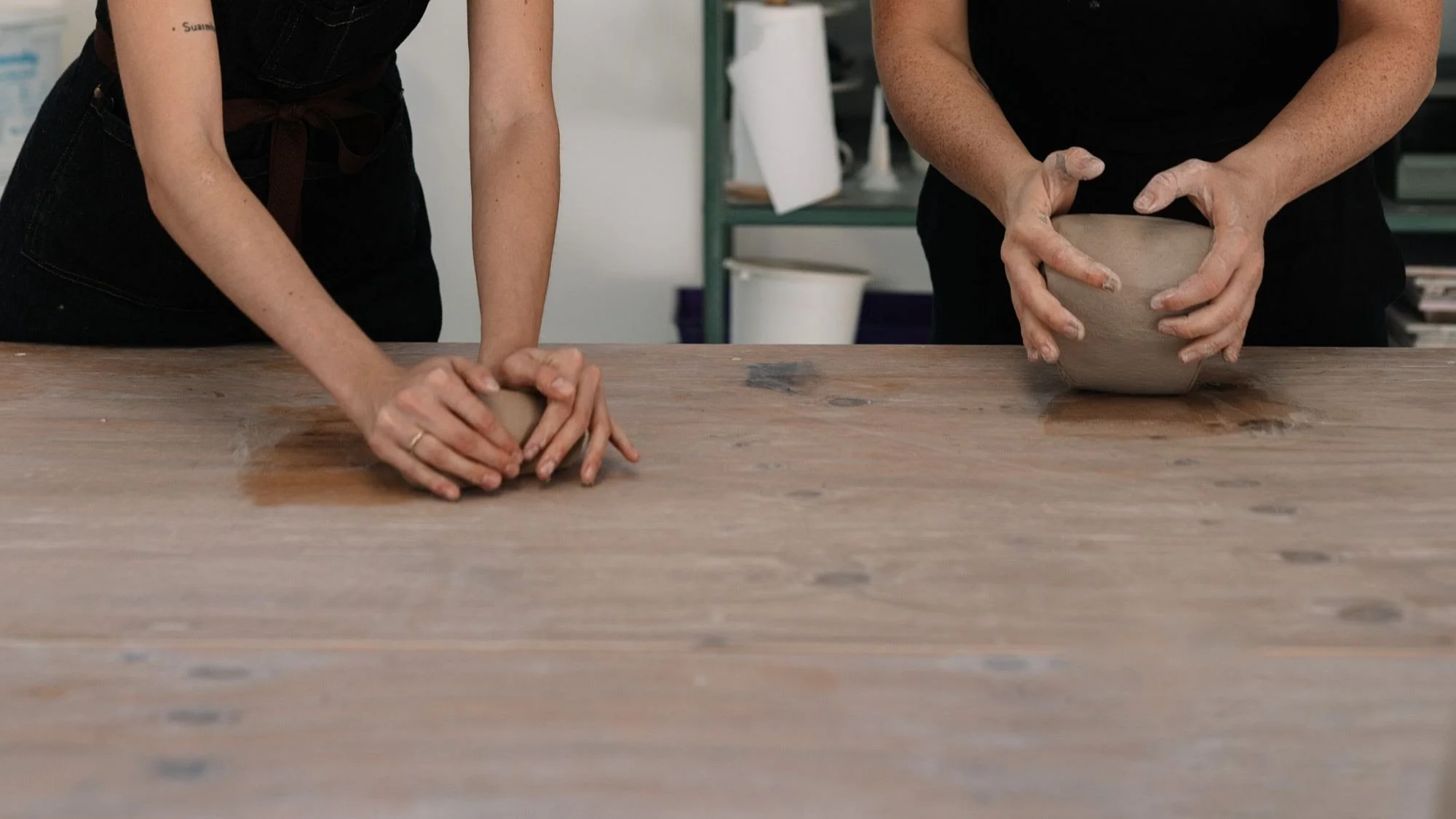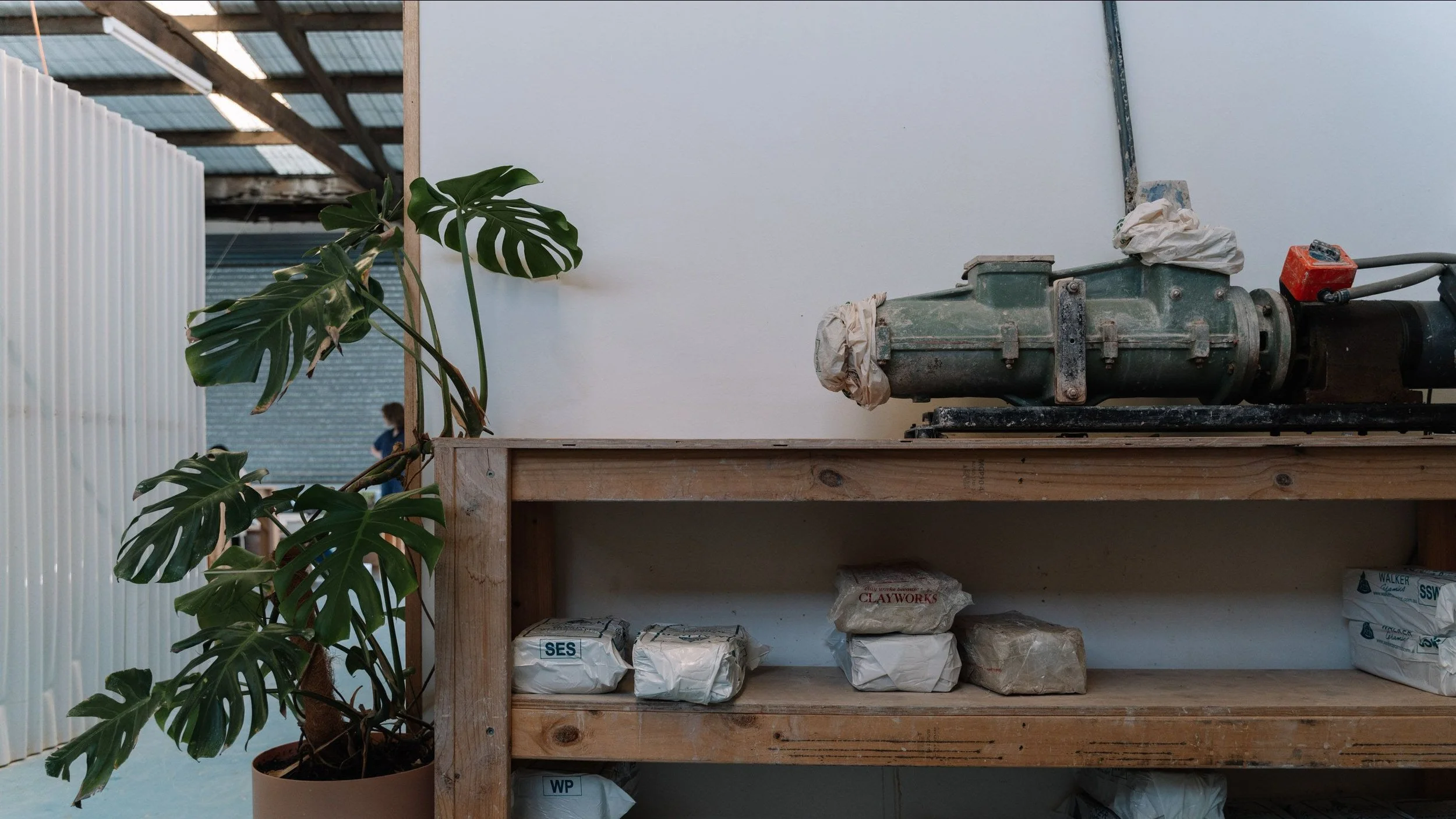Introduction to Clay Recycling
Taking care of the earth, from which our clay comes, is deeply important to us. This is reflected through our entire operation at Bisque Studios as the sustainability of our pottery practice is top priority. Recycling clay is a huge part of this and (I think) a really interesting process!
I notice, when teaching beginner pottery classes, that students often think that clay is non-recyclable. This usually presents itself through students' panic when their work hasn't gone to plan and it looks more like a pile of mud than a pot - we've all been there! Many of my beginner students have expressed concern that this clay will be wasted or can't be worked with again. Believe me, if the stakes were so high for my work not going to plan, I would never have made it this far in my pottery career!
Thankfully our pottery pieces that don't work out can be recycled and reincarnated as another student's beautiful work down the line.
Why Recycle Clay?
We are eternally grateful for the endless play, creativity and nourishment that this abundant resource provides us with. So, in return, we treat it with the care and respect that we feel it deserves. This is crucial to reduce harm to the earth and to facilitate long and beautiful pottery journeys, exploring this art form, for the potters who come after us.
A secondary reason, for those of you exploring pottery independently, is to keep costs at a minimum. The 'starving artist' is a stereotype that I identified with all too well when I first began my career as a maker; so, I understand the financial strain that comes with pursuing your passion. Recycling your clay extends its lifetime, giving you more bang for your buck!
Bags of clay in Bisque Studios store
What Clay Should You Recycle?
It is important to be cognisant of the energy required to fire our work and the fact that the pots that we make will remain on the earth long after we have left it. We try to be mindful of this and avoid firing work just for the sake of it; instead, we recycle as much clay as we can. I like to be guided by the motto of one of my fellow teachers here at Bisque - "If it's not a 'Hell yeah!', it's a no!"
After a class at Bisque Studios, each student will end up with at least one piece of work that they have transformed from a lump of clay into their own unique piece. If you have attended a class here you will know that any work, that students decide not to fire, will be added to what we call the 'graveyard'. The graveyard is simply a flat piece of plaster, covered in clay that is ready to be recycled. This remaining 'graveyard' clay, that students have worked with, will end up in one of 3 conditions; soft and malleable, wet and sludgy or dry and brittle.
Regardless of its consistency, clay can be recycled at ANY stage before it has been fired.
Wet & Sludgy Clay on a Plaster Bat
Each Stage of Clay Recycling
Soft & Malleable Clay
Soft and malleable clay can be wedged up to be used again straight away ('wedging' is a process that potters use to knead clay into a homogenous mixture).
At this stage we need to be sure to keep the wedged clay covered with plastic or a damp towel. This is to ensure that it doesn't dry out before the next maker has a chance to use it.
Wet & Sludgy Clay
Wet and sludgy clay can be put onto a plaster bat to dry out. We use plaster bats (i.e. a big, flat piece of plaster!) because the plaster absorbs the moisture from the clay at an even rate.
Crucially, we only leave this clay to dry until it is back to a soft and malleable state... if the clay becomes dry and brittle, it has been left on the plaster for too long!
Dry & Brittle Clay
Dry and brittle clay can be added to a recycling bucket filled with clay scraps and water. The water will break down the dry clay, converting it into wet sludgy clay, to be put onto a plaster bat to dry slowly too.
Soft & Malleable Clay being Wedged
Managing Wet & Sludgy Clay
Whether it started out in this state, or began as dry and brittle clay that was added to water, we are now left with lots of wet, sludgy clay on plaster bats... so, what's next?
Once the plaster has done its job, and removed a lot of the moisture from the clay, the clay will have transformed from its sloppiest state to a more malleable, soft condition. The speed of this process depends on the temperature of the studio in which it is taking place.
In order to determine if the clay is ready to be removed from the plaster bat, peel up a corner of the clay to test how easily it removes. Then proceed in one of 3 ways.
If the clay is sticky on the top, but can be peeled up off the plaster bat, it is half way there. Flip the clay over, using a rubber kidney tool or plastic scraper, so that the drier side is facing upwards and the sticky/ wet side is facing down and touching the plaster.
If the clay is too wet to peel off the plaster and flip, it is not ready yet. Leave it as is on the plaster and give the plaster more time to work its magic.
If the clay is not sticky and can be peeled off, it is ready to be removed.
It is at this point that we remove the clay from the plaster bats by combining it into large rolls (picture a pavlova or a rolled up carpet!).
Final Steps
At this stage we may simply opt to wedge the clay again so that it is ready to be used by the next maker.
Alternatively, we can take these rolls of clay and put them through a machine called a pugmill to return the clay to its initial, homogenous, state. This is often the approach taken at larger studios like Bisque Studios. Here at Bisque, we take this opportunity to mix the recycled clay with some new clays that are fresh out of a bag. We do this to achieve our signature clay blend, that we know our students love to work with, but it is not an essential recycling step.
Using specific ratios, that are unique to Bisque Studios, the new and recycled clay is fed through the pugmill. The clay then moves through the pugmill's chamber, to the nozzle, where a homogenous mixture of clay bodies is fed out.
This concludes our recycling process and we are finally rewarded with fabulous fresh clay that is ready to be formed into beautiful new ceramic work.
Pugmill at Bisque Studios
Have any questions?
Recycling clay is a very involved, but very rewarding, process.
If you have any questions, or want to learn more, feel free to get in touch with us on Instagram or ask one of our helpful teachers
at a pottery class or workshop - we are always excited to chat about all things clay!
Author: Ríona Mowlds - Artist, Teacher & Studio Tech




